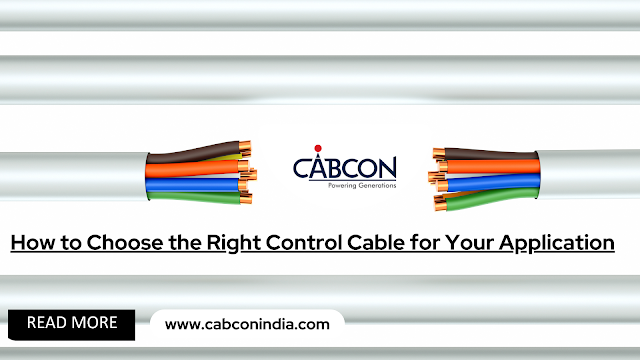Choosing the right control cable is crucial to ensure the safe and efficient operation of industrial equipment. Control cables are used to transmit signals and power between different parts of a machine or system. When selecting a control cable, there are several factors to consider. One of the most important factors is the voltage class. For control cables, this is already defined by the designation 300/500V1. It is important to choose a cable that is rated for the voltage and current requirements of the system. Using a cable with a lower voltage rating can result in overheating and damage to the cable while using a cable with a higher voltage rating can be unnecessary and costly. Another important consideration is the environment in which the cable will be used.
Control cables can be exposed
to a wide range of conditions, including temperature extremes, moisture, and
chemicals. It is important to choose a cable that is designed to withstand the
specific conditions of the application. The type of signals being transmitted
is also an important consideration. For example, motor cables and control
cables have different requirements3. Motor cables are used to transmit power to
motors, while control cables are used to transmit simple control signals. When
choosing a control cable, it is important to avoid common mistakes such as
choosing a cable-based solely on price or using a cable that is not rated for
the specific application. It is also important to choose a cable that is easy
to install and maintain.
When choosing the right
control cable for your application, there are several factors to consider. Here
are five additional points to keep in mind:
- Consider the cable's flexibility: Depending on the application,
you may need a cable that is highly flexible or one that is more rigid.
Highly flexible cables are ideal for applications where the cable needs to
move frequently, while more rigid cables are better suited for
applications where the cable will remain stationary.
- Look for cables with good shielding: Shielding is important for
protecting the cable from electromagnetic interference (EMI) and radio
frequency interference (RFI). Look for cables with good shielding to
ensure that your signals are transmitted accurately and reliably.
- Choose the right jacket material: The jacket material is the
outer layer of the cable and is responsible for protecting the cable from
environmental factors such as moisture, chemicals, and temperature
extremes. Choose a jacket material that is appropriate for the conditions
in which the cable will be used.
- Consider the cable's diameter: The diameter of the cable can have
an impact on its performance. Larger-diameter cables can carry data over
longer distances without signal loss, while smaller-diameter cables are
more cost-effective and easier to handle.
- Think about the installation process: Finally, consider the
installation process when choosing a control cable. Look for cables that
are easy to install and maintain, and consider factors such as the cable's
weight and bend radius.
By keeping these
factors in mind, you can choose the right control cable for your application
and ensure the safe and efficient operation of your equipment.In conclusion,
choosing the right control cable is essential for the safe and efficient
operation of industrial equipment. When selecting a control cable, it is
important to consider factors such as the voltage class, environment, and type
of signals being transmitted. By following these guidelines, you can choose a
control cable that is optimized for your specific application.

Comments
Post a Comment